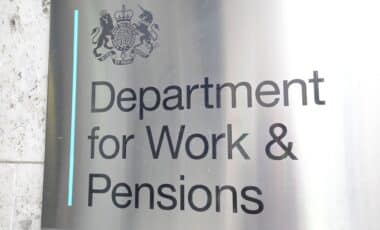A growing number of people are speaking out about the disparity between the UK’s New State Pension and the National Living Wage. This issue has gained significant attention following the launch of an online petition, which has already gathered over 10,100 signatures.
The petition urges the government to raise the State Pension to an amount that aligns with the National Living Wage, currently projected at £12.21 per hour for a 35-hour workweek in 2025/26.
According to Manchester Evening News, the proposal highlights concerns regarding the financial distress faced by pensioners, who are struggling to make ends meet on the current pension rate.
The Petition and Its Proposal
Initiated by campaigner Ken Marshall, the petition advocates for the New State Pension to be raised to £427.35 per week, equivalent to £22,000 per year.
This would align the State Pension with the National Living Wage for the year 2025/26, which is projected to be £12.21 per hour for a 35-hour workweek. Under the current system, the full New State Pension stands at £11,973 annually, or £230.25 per week. This is significantly less than the amount a worker would earn under the National Living Wage.
Ken Marshall’s petition argues that the current disparity is causing significant financial distress for elderly citizens.
The petition’s supporters contend that seniors, who have contributed significantly to society throughout their working lives, should not have to face such financial hardships during their retirement.
A Matter of Fairness and Respect
Marshall frames the issue as a matter of fairness and respect, asserting that it is critical for senior citizens to live comfortably in their later years. He states,
We must not allow our senior citizens, who have contributed so much to our society, to struggle through their sunset years.
In his view, ensuring that pensioners receive the equivalent of a National Living Wage is not just an economic matter but also a moral one. According to Marshall,
We all deserve a decent life when we get old.
This call for equity underscores the glaring contrast between the living wage earned by workers and the pension income provided to retirees. If adopted, the proposal would raise the State Pension to £427.35 per week, which is approximately £1,709 per four-week payment period, or £22,000 annually.
This increase would reduce the financial gap between pensioners and low-income workers, providing a better standard of living for seniors.
Government’s Response and the Role of the Department for Work and Pensions
Despite the widespread support for the petition, the Department for Work and Pensions (DWP) has expressed no intention of implementing such changes. In an official response, the DWP stated that the UK Government
Has no plans to make State Pension available from the age of 60 or to increase State Pension to equal 48 hours of work a week at the National Living Wage.
The DWP emphasised that while it is committed to supporting current and future generations of pensioners, the State Pension and the National Living Wage serve distinct purposes. The State Pension is a benefit tied to an individual’s National Insurance contributions, whereas the National Living Wage is intended to provide a minimum income for workers. The DWP continued,
The National Living Wage is designed to protect low-income workers and provide an incentive to work.
Furthermore, the DWP underscored the historical basis for the State Pension system, explaining that since the National Insurance Act of 1946, the pension has been legally classified as a “benefit.” This distinction, the department argues, means that comparing the two is not entirely appropriate.
Financial Forecasts for Pension Increases
Under the Triple Lock System, which guarantees that the State Pension will rise each year by the highest of three measures — inflation, average earnings, or 2.5% — it is projected that the pension will increase annually at a modest rate.
For instance, in the 2025/26 financial year, the State Pension is expected to rise by 4.1%, up from an earlier forecast of 4%. The increases for the following years are forecast as follows:
- 2026/27: 2.5%
- 2027/28: 2.5%
- 2028/29: 2.5%
- 2029/30: 2.5%
Despite these increases, the growing concern is that even with the Triple Lock in place, the State Pension will continue to lag behind the National Living Wage, leaving pensioners with insufficient income to meet rising living costs.
The Role of Workplace Pensions and Automatic Enrolment
The DWP also pointed to other reforms aimed at improving retirement security. The introduction of Automatic Enrolment in 2016 has led to higher participation rates in workplace pensions. This system requires employers to automatically enrol eligible workers into pension schemes, with the intention of increasing private savings for retirement.
According to the DWP, Automatic Enrolment has helped bridge the gap between pension participation rates among men and women in the private sector. Together with the New State Pension, these reforms are meant to provide a sustainable foundation for retirement savings. The government has also highlighted that those on low incomes are supported by Pension Credit, a safety net for the most vulnerable pensioners.
The Future of the State Pension and National Living Wage Debate
While the petition continues to gather support, its future remains uncertain. A key milestone is the 100,000 signatures required to trigger a debate in Parliament, where the issue could receive more direct attention.
Currently, the UK Government has firmly rejected proposals to increase the State Pension to match the National Living Wage, suggesting that this comparison between the two income figures is not a fair one.
In the coming years, however, the debate over pensions and the living wage is likely to intensify.
Advocates for pension reform argue that the existing system is failing to provide adequate support for senior citizens, many of whom are facing financial hardship in their later years.
Whether the government will reconsider its stance remains to be seen, but for now, the gap between the State Pension and the National Living Wage remains a point of contention in the ongoing conversation about retirement security in the UK.
In the meantime, campaigns like Marshall’s continue to shine a light on the issues facing pensioners, urging the government to take a hard look at the adequacy of the State Pension in the face of increasing living costs.
With more people joining the cause, the demand for change is growing louder and may soon lead to further discussions on how to ensure a better quality of life for seniors in the UK.









